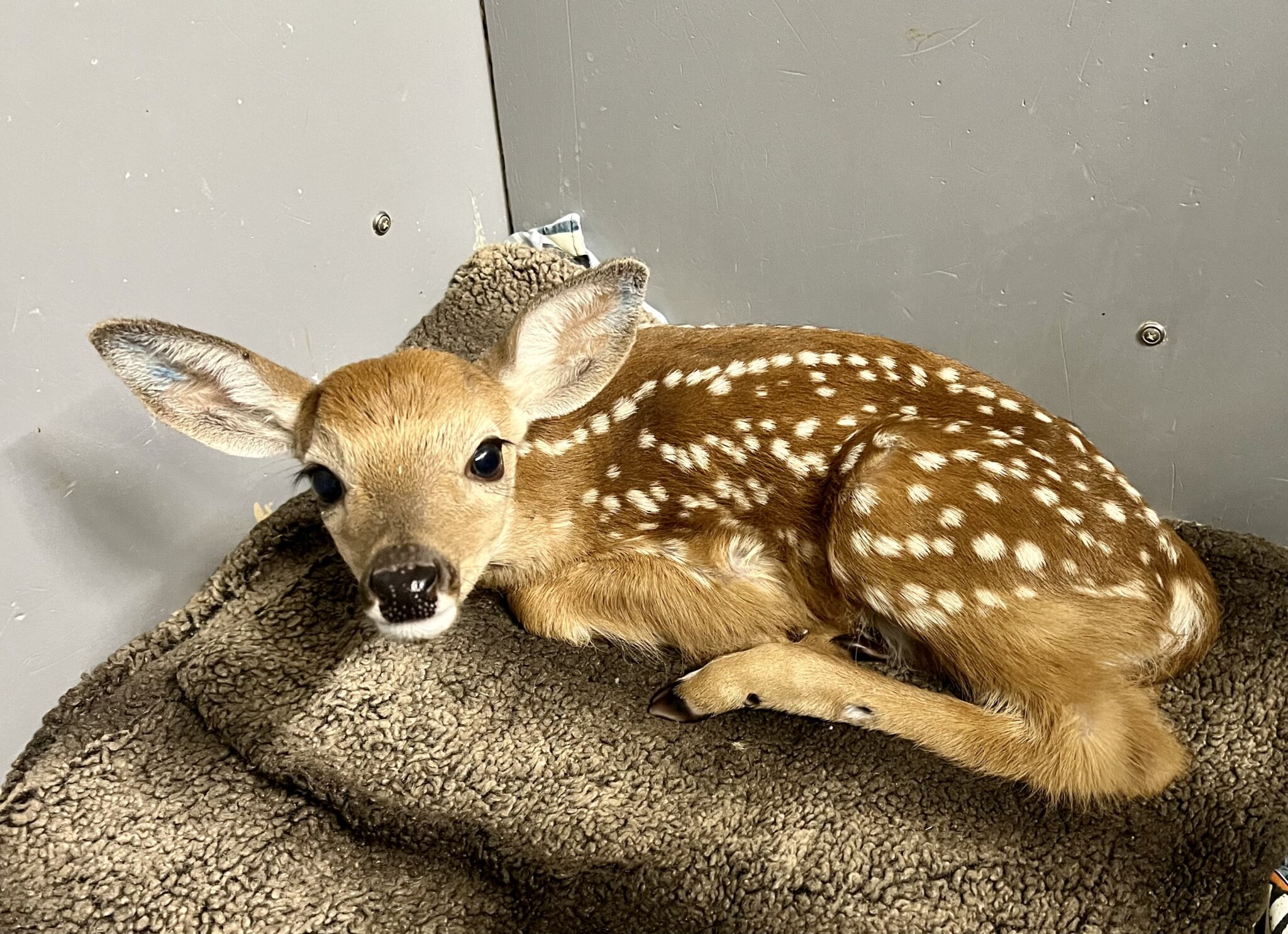Evelyn Alexander Wildlife: Preventing Accidental 'Kidnappings' During Spring Mating Season

The return of spring means mating season is back, and with it comes thousands of newborn creatures — many of whom are separated from their mother accidentally or by preventable “kidnappings.”
Well-intentioned people who “kidnap” seemingly abandoned young animals found in their backyards often bring them to places such as the Evelyn Alexander Wildlife Rescue Center. The only issue? They are not actually abandoned. EA Wildlife Center Director of Development Noelle Dunkirk explains which animals are likely to appear abandoned when they are not, and when it’s appropriate to intervene.
The most common kidnapped wildlife newborns are rabbits
“People often think they are abandoned because they are extremely small when they are young,” Dunkirk explains.
The local Eastern Cottontail rabbits are often the victims of accidental kidnapping. Residing at the bottom of the food chain, rabbits are always on the lookout for sustenance. The mother rabbit will leave the nest for extended periods of time to help distract predators from the nest, only ever visiting twice a day, at dawn and dusk, and staying with their young for as little as a minute.
People may find nests filled with baby rabbits; but when they have not been educated that these young animals are intentionally left without a guardian, concerned citizens may contact wildlife experts. If there is nothing visibly wrong with the rabbits, people should leave the nest alone and restrict activity around that area to resist drawing attention to it.
The second most common kidnapped animals are fawns. Similar to the behavior of mother rabbits, a mother with her fawn will often leave her baby alone in a place she thinks is safe for multiple hours, similar to, as Dunkirk explains, what is like “parking your car.” The newborn fawn, although it may look it, isn’t abandoned curled up in a random spot; it is strategically placed there by its mother. Bringing the fawn somewhere else leaves a mother in distress when she can’t find her baby upon her return.
If the fawn is curled up, there are no signs of injury, and it appears relaxed or sleeping, then the fawn is most likely healthy and has not been abandoned. If the fawn is flat on the ground, there is a chance for injury, so monitor from a distance until the mother arrives, or call your local wildlife center.
The third most common kidnapped animal is fledgling birds. These young birds will hop out of their nest, unable to fly. People often assume these fledgling birds are injured; however, they are simply in the thick of what Dunkirk likes to callthe “awkward teenage phase.” After leaving their nests, birds can learn to fly for as short as a couple minutes to as long as a couple days. Well-meaning humans assume hopping around on the ground and hiding in a bush at night night is a sign of injury; yet this is typical behavior for fledgling birds.
If you think a bird might be injured, look for clear signs of injury such as a broken leg, swaying wing, or other physical symptoms. Watch the fledgling hop around in your backyard for a bit, and it will likely soon get the hang of flying.
If you notice baby animals near your home, keep all dogs, cats, and kids away from them under all circumstances. If your dog or cat catches a young animal — or any animal for that matter — they must be brought to a vet or wildlife refuge as soon as possible even if the animal looks fine. Dunkirk emphasizes this because “dogs and cats can produce small and unnoticeable puncture wounds and inject harmful bacteria that can cause life threatening infections.”
Newborn animals are undeniably adorable. While it may be tempting to protect an animal in need, if it is not actually abandoned or injured, you will likely do more harm than good. If youbelieve a young animal is abandoned or injured, call the EA Wildlife Center for advice; they can confirm if what you’ve witnessed is simply part of an animal’s daily routine.
The center is located at 228 West Montauk Highway, Hampton Bays. It can be reached at 631-728-4200, and animal emergencies can be reported at 631-728-WILD (9453). The center is open 9 a.m.–5 p.m. seven days weekly. Visit wildliferescuecenter.org for info.



